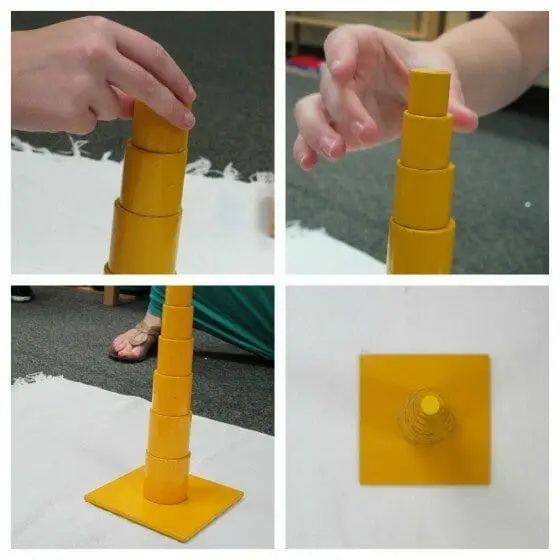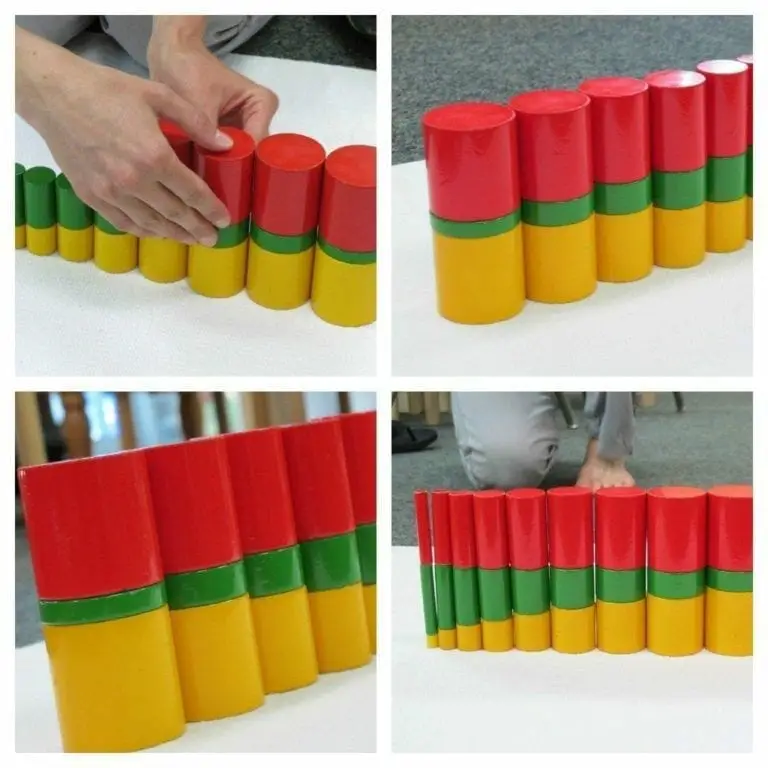Montessori Sensorial gives order to a child’s environment. The materials isolate a specific quality and guide the child to better understand the world by “organizing” all that he is soaking up in his environment.
I have written on Montessori Sensorial philosophy in the past. I hope you take the time to read up on Dr. Montessori’s thoughts. Below is a lesson on the Montessori Knobless Cylinders.
The Knobless Cylinders are the 5th material in the sequence, following Knobbed Cylinders, the Pink Tower, the Broad Stair, and the Red Rods. The Knobless Cylinders further define and refine a child’s Visual Sense.

Knobless Cylinders Material
Montessori Knobless Cylinders come in four boxes differentiated by color. I purchased my Knobless Cylinders from Montessori Outlet. There are good deals on Amazon if you want to add this versatile material to your shelves. Inside each of the boxes are 10 cylinders varying by dimension as follows:
- Red: varies in diameter
- Yellow: varies in height & diameter (the widest cylinder is also the tallest)
- Green: varies in height & diameter (opposite to yellow, so the widest cylinder is also the shortest)
- Blue: varies in height only
Knobless Cylinder Lesson

“These are the knobless cylinders; let’s work with the yellow box.”

Carry the box to the mat with hands on either side, thumbs on top, fingers under the box. Place the box in the upper left-hand corner of the mat.

- Remove the lid and place it to the right of the box.
- Remove cylinders one at a time with a 3-finger-grip.
- Place randomly on the mat with the largest near the smallest for contrast.

Say to the child: “I’m looking for the largest one.” Place the largest cylinder to the left.
- Order the cylinders one by one, to the right, ending with the smallest.
- Cylinders should touch and may be aligned with the edge of the mat or centered with the preceding cylinder.
- Admire and feel the line.

- Move the lid to the center of the mat. Build a tower on the lid, beginning with the largest cylinder and ending with the smallest.
- Get a bird’s eye view for centering during the process & once the tower is complete.
- Take the tower down and array it randomly for the child to try.

Place the cylinders back into the box: “The largest one always goes in the box first.”

One of the greatest parts about Knobless Cylinders is the variations and extensions with the materials. I wrote a post on Sensorial Variations & Extensions recently. Be sure to check it out.
